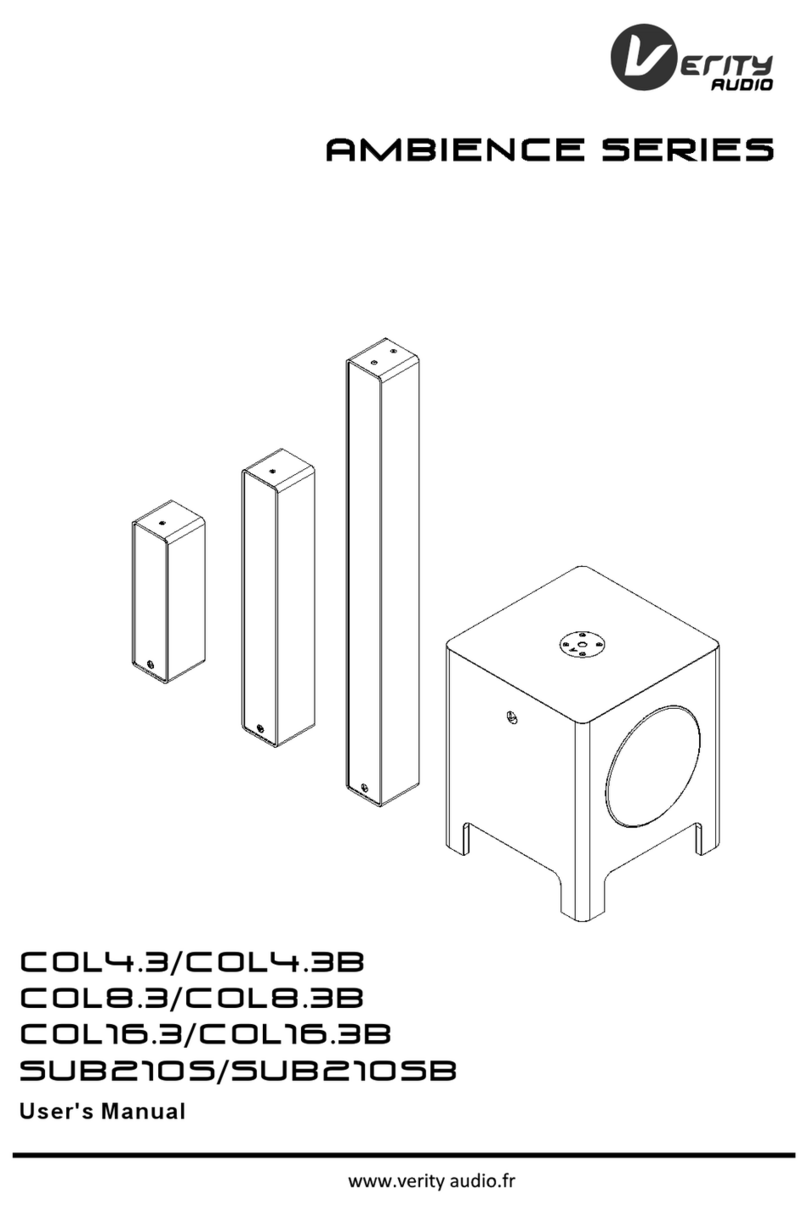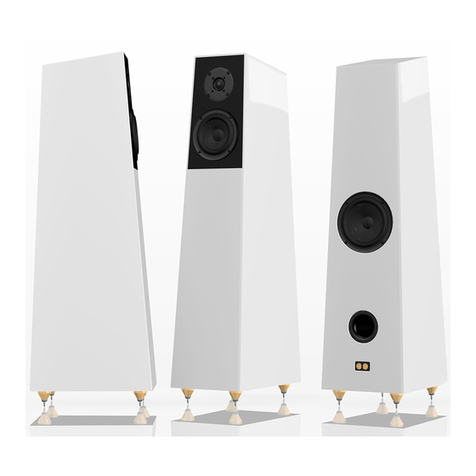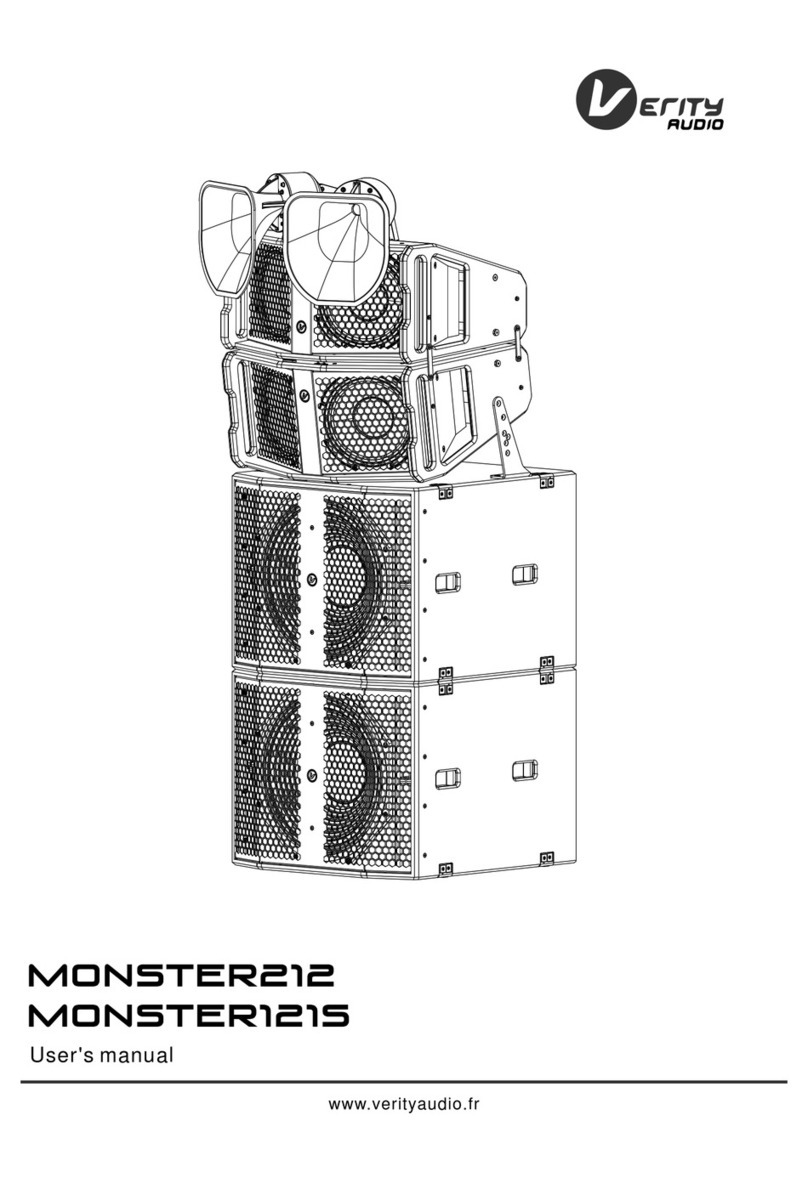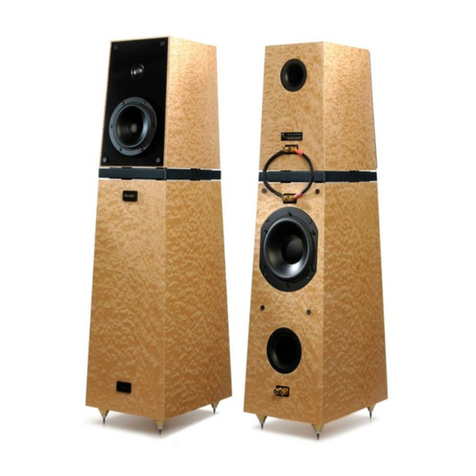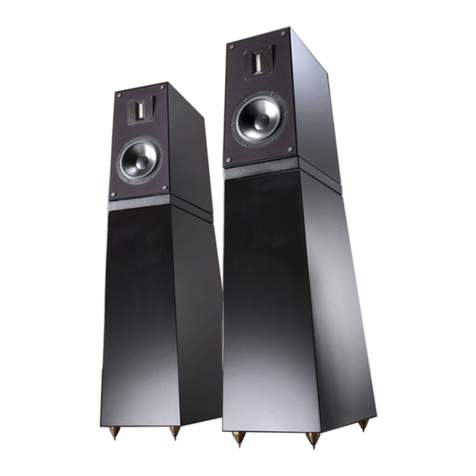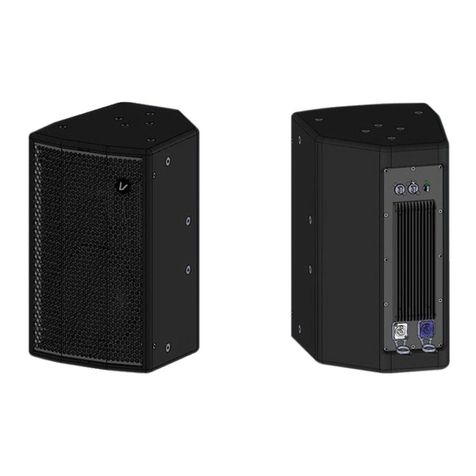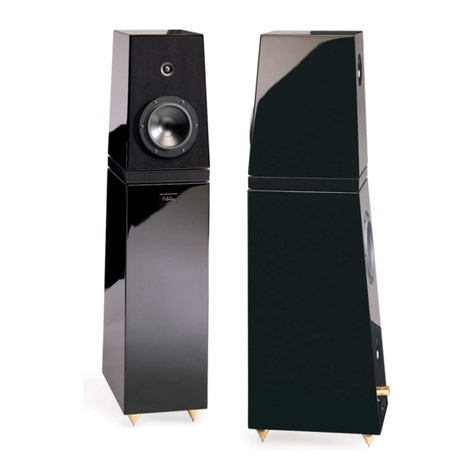
Arindal
R1.0
OWNER’S MANUAL
August 2022
VERITY AUDIO PAGE 5
Your Arindal comes packed in a wooden box complete with all the
necessary protection accessories. For transportation purposes, we
strongly recommend you to keep and store all your packaging hard-
ware.
Unless the carrier is notified promptly and all the shipping cases are
available for inspection, the right to claim can be forfeited.
Installation
This section depicts how to assemble and connect the Arindal louds-
peaker.
To identify a proper location for the installation of your Arindal, please
refer to the Room Placement section of this manual or follow the re-
commendations of either Verity Audio or your dealer.
Once the speakers are properly installed, connect them to the am-
plifier using quality speaker cables. Make sure that the polarities are
respected at both ends and that your cables are installed in the proper
direction. The positive input is identified by both either the (+) sign or
red connector and the negative input is identified by either the (-) sign
or the black connector located on the connector plate.
For vacuum tube equipment that has multiple output impedance taps,
the eight-ohm taps should provide the best interface with the Arindal.
Isolating Base
Your Arindal loudspeakers are designed to lie on top of a floor isola-
tion stand which improves the acoustic performance by controlling
undesired stray energy. Your floor isolation stand is a shell containing
special materials that act as an acoustic resonator and filter. It rests on
four adjustable cushioned feet.
Installing the loudspeaker on the floor isolation stand is easy. Simply
put the stand on the floor at the chosen location, then carefully lay
down the cabinet on top of it. The stand is shaped like the loudspeaker
bottom, an elegant design that also guarantees optimal isolation. For
ideal performance, make sure the loudspeaker lies straight on top of
the floor isolation stand. The stand and loudspeaker should perfectly
match.
Once the speaker lies on the stand, it is best to level the whole louds-
peaker by adjusting the height of each individual foot. No tool is re-
quired: simply screw or unscrew the knurled feet by hand. Each foot
can be adjusted individually, which allows you to level the unit even if
it stands on an uneven floor.
The feet of the floor isolation stand are cushioned, allowing you to
easily move the Arindal by gently pushing them. Do not push the unit
from the top, as the speaker might tip over but push it at its base, near
the floor. Once assembled, the loudspeaker and stand are designed to
remain coupled through high friction material. Therefore, you don’t
need to lift the unit or lift the speaker from the stand if you wish to
move your Arindal. Never try to lift both the loudspeaker and the iso-
lation base altogether.
Unlike the spikes that are the industry standard, the cushioned feet of
Verity’s floor isolation stand do not damage floors and allow you to
easily and quickly move your loudspeakers. You can thus easily adjust
the placement of your speakers inside your listening room or move
them around as needed.
Please note that the loudspeaker may no longer be leveled after it is
moved. For your speakers to deliver their best performance, we recom-
mend that you double-check whether your loudspeaker remains level
after being moved, then adjust the feet of the floor isolation stand to
restore the proper alignment if necessary.
Room Placement
Indoors, acoustic intelligibility is of great concern for a variety of rea-
sons. It requires low background noise levels and “good” acoustical
design. In any room, the reverberant sound pressure level increases as
the acoustic power increases and decreases as sound absorption in the
room increases and / or sound power flows from the room. The sound
field in a room is composed of two parts, the direct field and the re-
verberant field.
The complex theories of physical acoustics, the uncertainties in predic-
ting the property variations of both natural and manufactured room
materials, and the none negligible effects of painting, sealing, bracing,
furring, and draping all keep the specification and prediction of room
acoustics from being an exact science. Adding together, loudspeaker
characteristics, the auditory personal taste and ergonomics make, by
practical means, the equation impossible to solve. The frequent need
to evaluate the final result by listening rather than by purely quanti-
tative methods gives acoustical tuning a somewhat subjective proce-
dure.
Nevertheless, knowing what the Arindal is capable of doing will be
your major asset in establishing the best setup for your loudspeaker.
Here are a few simple rules that will guide you. A good setup will give
you fast transients from the bottom end to top-end, proper image
height and a wide and deep soundstage.
Having that in mind, the following guidelines are based on our own
experience with the Arindal. We recommend that you start with these
and later on (after getting familiar with your Arindal) bring your own
modifications that will optimize your setup.
First, the distance from the rear wall to the speaker woofer (dust-cap
center) should be equaled to the length of your room multiplied by
0.1459. Then the distance from the side wall to the speaker woofer
(dust-cap center) should be equaled to the width of your room multi-
plied by 0.1459. Finally, your listening position should be width-cente-
red and the distance from the rear wall to your ears should be equaled
to the length of your room multiplied by either 0.1459, 0.2360 or
0.3819.
Note that the above method should be considered as a rudimentary
guideline. Loudspeaker room placement is an art in itself and the best
setup will most likely require trials and errors . For best results, we
simply recommend that you contact Verity Audio (info@verityaudio.
com) and ask for advice. Our acousticians are knowledgable and will
propose a few loudspeaker placements according to your room spe-
cifications and restrictions. We have been helping our customers for
years in finding the best location for their loudspeakers. Please note
that there is no distance limitation with the rear woofer and back wall,
simply make sure that the vent clearance is more than 8-inches.
